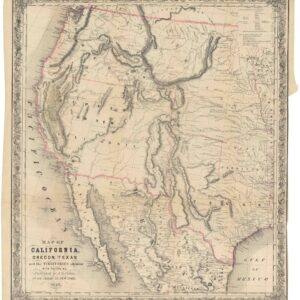A pair of wonderful early 19th century data visualization engravings comparing mountain heights on Earth and its moon, Venus, and Mercury.
Allgemeine Darstellung der Oberflächen der Weltkörper unseres Sonnengebietes, besonders der Erde, des Mondes, der Venus und des Merkur’s, zur Vergleichung ihrer wundervollen Naturbaue und merkwürdige Naturkräfte.
Out of stock
Description
This is the first edition of a popular account on the comparison of the heights of mountains on Earth, the Moon, Venus, and Mercury, written by a German professor of astronomy.
The text is accompanied by two spectacular fold-out charts engraved by Christian von Mechel and first published separately in 1806 by Simon Schropp, Berlin. The charts represent a form of data visualization, based on the work of Alexander von Humboldt and Heinrich Schroeter at the Lilienthal Observatory.
The first chart, Tableau des Hauteures principales du Globe, is a lovely comparative diagram of mountain heights in different regions of the Earth, with special emphasis on mountains in Europe, in particular the Alps. The Himalayas are absent, and the tallest mountain depicted is Chimborazo, which is part of the Andes. A note mentions that the elevation was recorded by von Humboldt in 1802.
The second chart is titled: Tableau comparatif des montagnes de la Lune, de Vénus, de Mercure et de quelques-unes des plus hautes montagnes de la Terre. It features a detailed depiction of known mountain heights and crater depths on the Moon, linked to the text in the book by numbers. There is also a comparison of elevations for the principal mountains on Venus, Mercury, and on Earth.
The four main mountain ranges of Venus are named Akna Montes, Danu Montes, Freyja Montes, and Maxwell Montes. These are found on Ishtar Terra. Mountain ranges are formed by the folding and buckling of a planet’s crust. The mountain ranges of Venus, like those of the Earth, are characterized by many parallel folds and faults. The presence of mountain ranges on Venus may provide evidence that the planet’s surface is in motion.
For its part, Mercury is the smallest planet in the Solar System, and the one nearest to the sun. Only slightly larger than the Earth’s moon, Mercury’s surface is covered with craters. Its main mountain range is called the Caloris Montes.
Towering above the highest mountains of both Earth and Mercury is Skadi Mons on Venus. Part of Maxwell Montes, it is the highest point of the planet with an altitude of about 10,700 meters above the mean planetary radius.
Finally, in the lower right corner of the engraving is an interesting explanation of the methodology for measuring the Moon’s mountains and craters.
Overall, a wonderful piece for the history of science.
Cartographer(s):
Christian von Mechel (1737-1817) was an important Swiss engraver, publisher, and art dealer.
Condition Description
Very good. Collation complete; a few pages uncut. Library stamps on cover and title page — the book was properly deaccessioned in the early 20th century. Small tear in margin of the second chart.
References
BnF ark:/12148/btv1b530936026



